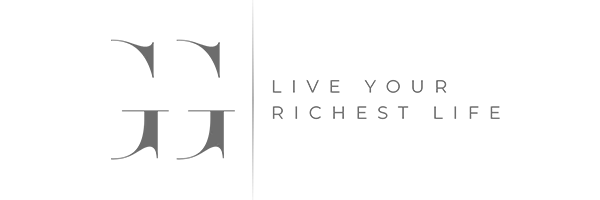
You’ve built a strong income. Now it’s time to match it with a structure that brings clarity, efficiency, and peace of mind. Whether you're growing a business, building your legacy, or streamlining complexity, the right financial system multiplies the impact of every dollar you earn.
"Most people don’t need more income. They need a better structure for the income they already have." –Brock Fortner, Founder of StoneCentury Financial
We help you:
Plug the leaks silently draining your wealth.
Align every dollar with purpose, not guesswork.
Build financial systems that work even when you’re not watching them.
Book your 1-hour Discovery Call to learn what’s possible.
Explore our framework before you book.
Choose the journey that fits your life right now:

The Intentional Starter
Age 25–35 | Early-Career Pro or New Business Owner
You’re making real money but want to make real progress.
What You Want: Automatic savings, clear next steps, peace of mind.

The Architect of Freedom
Age 40–55 | Established Exec or Entrepreneur
You’ve built momentum. Now you want time, simplicity, and impact.
What You Want: A system that protects your lifestyle and future.

The Legacy
Steward
Age 55–70 | Business Owner, Investor, or Executive
You’ve built something worth protecting. Let’s make it last.
What You Want: Family clarity, estate harmony, structured transfer.

The Performance-Driven Producer
Age 35–50 | Sales Leader, Consultant, or Investor
You’re growing fast but need a system that can keep up.
What You Want: Simplicity, tax efficiency, and scalable savings.

Random accounts. Outdated policies. Investments from 3 different advisors.
Most of our clients come in with what we call a “financial junk drawer.” You’ve got pieces of a plan, but no full picture. We help you dump out the drawer, get organized on one page, and align your money with what matters most.
"You don’t need another product. You need to see the whole game board, then build your strategy."
See how we turn disjointed decisions into a clear strategy.

Budgeting isn’t the solution to long-term wealth building. Structure is.
Here’s how we systematize your financial foundation:
Separate Income from Expenses: Income flows into your Income Reservoir, not your checking account.
Automate Everything that Matters: Your money moves with purpose, without manual effort.
Use Timely Data: See exactly what you can spend, save, or invest in real time with no guesswork.
This framework powers our clients’ 28% average savings rate.

Other advisors focus on your accounts. We focus on your system.
That means we don't ask, "How much are you saving?"
We ask, "How much are you unknowingly losing and how do we fix it?"
Here’s what sets us apart:
28% Average Client Savings Rate without budgeting, spreadsheets, or stress.
The LEAP Model: Your full financial picture, visible on one page.
Currence Cash Flow Automation: Set it, see it, and save automatically.
The Rockefeller Method: Family legacy systems that preserve wealth and unity.
Attorney-Level Estate Plans: Created from home at a fraction of the cost.
"This isn’t about returns. It’s about reclaiming control and creating lasting financial confidence."
“Working with Brock has completely changed the way I think about money, and that shift has had the biggest financial impact on my life.”
— Louis, Account Executive
“We’re well on our way to $100k/month in passive income, and I finally feel like our legacy is secure.”
— Audelino M., CEO
“Since working with Brock, I’ve saved over 20% more each month automatically, and I’m making smarter, faster decisions.”
— Jeremy R., Real Estate Investor
These aren’t outliers. They’re the result of a repeatable system.

We’re one of the few firms nationwide licensed to implement the Rockefeller Method. This is a proven approach to protect, grow, and pass on wealth without creating entitlement.
We help clients:
Create a family financial constitution.
Use structured trusts to preserve privacy and impact.
Build wealth systems that support each generation instead of resetting.
“The goal isn’t just to pass on assets. It’s to pass on wisdom, structure, and stewardship.”
Learn how this system supports generational wealth with intention.
Get the book that reveals the Rockefeller Method in full.

We don’t just talk about building a better system. We build it fast.
Here’s what most new clients accomplish in the first 90 days:
Get your full financial picture on one page.
Implement a personal cash flow system that saves 20–30% automatically.
Identify and plug your top 3 financial leaks.
Set up your Income Reservoir and baseline spending.
Gain clarity on what’s safe to invest and where to wait.
“Since working with them, I’ve made steady financial progress and gained something unexpected: more confidence in making financial decisions.”
— Ambika S., Dentist

Hi, I’m Brock Fortner, financial strategist, business owner, and someone who’s lived both sides of the wealth equation. I’ve been broke. I’ve built businesses. And I’ve helped hundreds of high earners turn income into peace of mind, systems, and legacy.
This firm was born out of frustration with traditional advice and the conviction that financial freedom is built with structure, not speculation.
“Most people don’t need more income. They need a better system.”
We’ve been featured in and connected to some of the most respected financial education networks in the country:



LEAP


Schedule a 1-hour Discovery Call. No pressure. Just clarity.
You’ll walk away with:
A snapshot of your current financial efficiency.
Personalized next steps to increase control, savings, and impact.
Confidence that your income is finally working as hard as you do.
*Disclaimer: Financial Advisors do not provide specific tax/legal advice and this information should not be considered as such. You should always consult your tax/legal advisor regarding your own specific tax/legal situation. Separate from the financial plan and our role as a financial planner, we may recommend the purchase of specific investment or insurance products or account. These product recommendations are not part of the financial plan and you are under no obligation to follow them. Life insurance products contain fees, such as mortality and expense charges (which may increase over time), and may contain restrictions, such as surrender periods.

